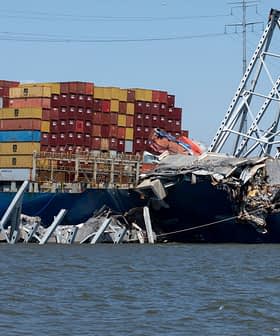The University of California, Davis Olive Center will host a free webinar on modernizing table olive groves on June 23.
The webinar will feature presentations from Dan Flynn, the Olive Center’s outgoing executive director, and Dennis Burreson, the vice president of field operations at Musco Family Olive Company.
Modern acreage for table olives is probably going to be the future of this industry for it to continue and to thrive in California.
Flynn told Olive Oil Times that only a handful of producers in California cultivate table olives in high-density groves, which are planted with about 200 to 250 trees per acre. Traditional table olive groves tend to have fewer than 100 trees per acre.
“For the existing growers, most of them have their trees planted at a low density,” Flynn said. “The trees are probably more than 50 years old. The olives are handpicked and the economics of it are not very attractive to someone who is looking at being a table olive grower.”
See Also:California Table Olive Harvest Exceeds Expectations Despite Pandemic, WildfiresAccording to the Olive Center, modern table olive groves yield up to six tons per acre, which far surpasses the industry average for traditional groves of about 3.2 tons per acre. Along with higher yields, modern table olive acreage is also more cost-efficient since it allows for mechanized harvesting.
“Modern acreage for table olives is probably going to be the future of this industry for it to continue and to thrive in California,” Flynn said. “We’re going to be presenting the basics on how to site, establish and manage these orchards, so people get an introduction and a sense of what’s involved.”
Flynn added that he expects participants from a diverse array of backgrounds will participate in the event, from traditional table olive growers to perspective farmers and others looking to diversify their crop portfolios.
“For those people who have a different crop right now and maybe are running up against some limitations with that crop, whether it be water availability or reduced chill hours… table olives might be a good option for them,” he said.
The webinar is set to take place just as the World Trade Organization announces its decision on whether or not to uphold anti-dumping and countervailing duties imposed by the United States on Spanish black olive imports in 2017.
In lodging their complaint with the U.S. Commerce Department, which enacted the tariffs, olive growers, including the Musco Family Olive Company, said European Union subsidies gave Spanish olive producers an unfair competitive advantage. Spanish producers denied this to be the case.
While Flynn said the timing was purely coincidental, he acknowledged the importance of making olive growing as economical as possible to allow California producers to compete on a global scale.
“For any grower, whether they’re in Spain, California or anywhere else where they grow olives, it’s always important that you try to make a profit from the land that you’re farming,” Flynn said.
“At UC Davis, we’re trying to help growers think about how they can get higher productivity,” he added. “Maybe it’s with fewer inputs – less water, less fertilizer – but you’re getting higher profitability, larger yields and higher quality. That is what we’re about and I think that’s the same with growers anywhere.”
The free webinar on modern acreage for table olives will take place on June 23 from 9 a.m. to 10:30 a.m. U.S. Pacific Time. Those interested in attending may register here.








